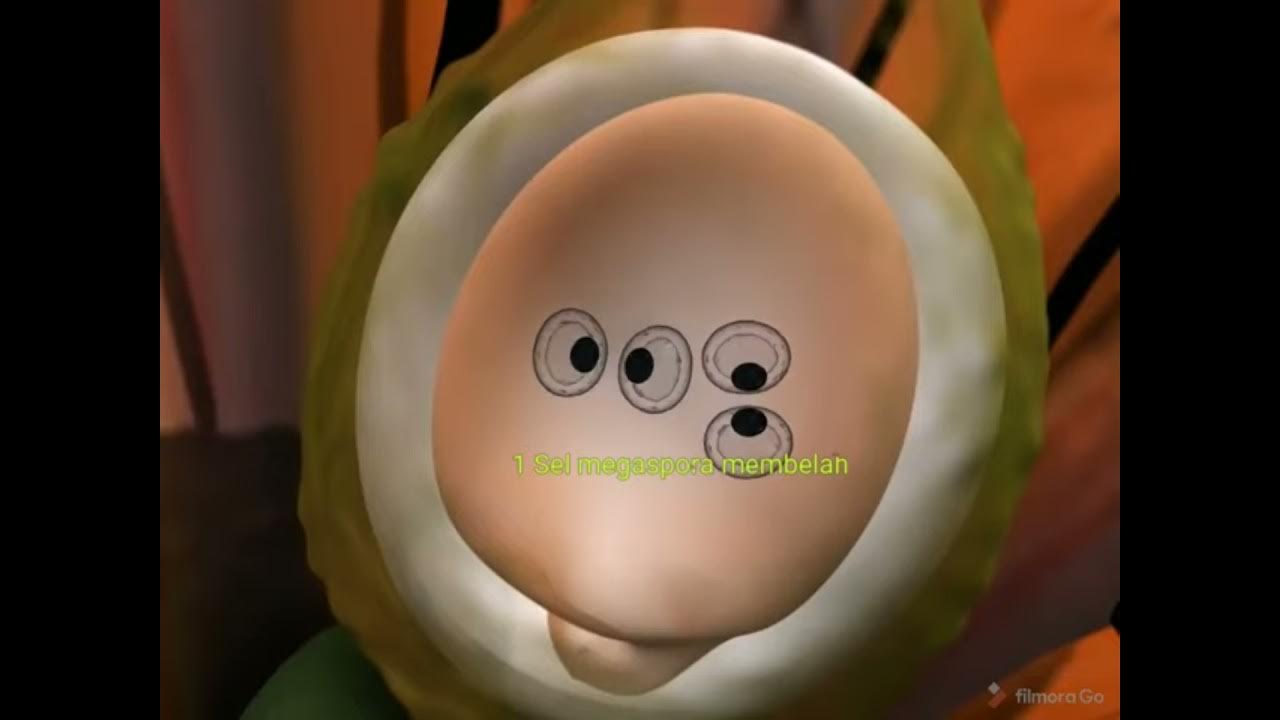Double Fertilization in Angiosperms
Summary
TLDRThe script describes the unique double fertilization process in flowering plants. It begins with the female ovule containing a megaspore mother cell that undergoes meiosis to form four haploid megaspores. One survives, undergoes mitosis, and forms an embryo sac. The male gametes, contained in pollen grains, travel from the anther to the embryo sac. Upon reaching the ovule, one sperm cell fertilizes the egg to form a diploid zygote, while the other fuses with central nuclei to form a triploid endosperm, providing nourishment for the developing embryo. This process is exclusive to angiosperms.
Takeaways
- 🌱 **Double Fertilization**: Flowering plants have a unique reproductive process involving two fertilization events.
- 🔬 **Male and Female Organs**: The reproductive process involves the male organ (anther) and the female organ (ovule).
- 🌸 **Megagametophyte Development**: Before fertilization, the ovule contains a megaspore mother cell which undergoes meiosis to form megaspores.
- 📉 **Survival of Megaspore**: Typically, three out of four megaspores degenerate, leaving one to develop into an embryo sac.
- 💧 **Embryo Sac Formation**: The surviving megaspore undergoes mitosis to form an embryo sac with distinct nuclei and cells.
- 🌿 **Cell Differentiation**: Within the embryo sac, specific cells like antipodal cells, synergids, and the egg cell are formed.
- 🚀 **Pollen Grain Germination**: The pollen grain, containing a tube cell and a generative cell, must land on the stigma to germinate.
- 🌟 **Pollen Tube Growth**: The tube cell grows a structure that extends into the ovary, with the generative cell following.
- 🌡 **Sperm Cell Production**: Near the ovary, the generative cell divides to form two haploid sperm cells.
- 🌍 **Fertilization Process**: One sperm cell fertilizes the egg cell to form a diploid zygote, and the other fuses with central nuclei to form a triploid endosperm.
- 🌾 **Endosperm Function**: The triploid endosperm serves as a food supply for the developing embryo in flowering plants.
Q & A
What is the unique reproductive process in flowering plants?
-The unique reproductive process in flowering plants is double fertilization, where two fertilization events occur between the male and female reproductive organs.
What are the male and female reproductive organs in flowering plants?
-The male reproductive organ is the anther, and the female reproductive organ is the ovule.
What changes must the ovule undergo before fertilization can occur?
-Before fertilization, the ovule must undergo changes that include the deployment of the megaspore mother cell, meiosis to produce four haploid megaspores, and mitosis to produce eight nuclei within the embryo sac.
What happens to the majority of the megaspores produced after meiosis?
-In the majority of species, three out of the four megaspores degenerate, leaving only one surviving megaspore.
What is the structure formed by the surviving megaspore after it undergoes mitosis?
-The surviving megaspore forms the embryo sac after undergoing mitosis and producing eight nuclei.
What are the different cell types formed within the embryo sac?
-Within the embryo sac, three antipodal cells form opposite the micropile, two synergid cells form above the micropile, and the egg cell is also present, with two central nuclei remaining in the center of the ovule.
What is the role of the central nuclei in the ovule during double fertilization?
-The central nuclei in the ovule will eventually become part of the double fertilization event by fusing with one of the sperm cells.
How does the male gametes' journey begin for the double fertilization event to occur?
-The journey of the male gametes begins when the pollen grain lands on the stigma and starts to germinate, forming a pollen tube that travels down the style into the ovary.
What are the two main cells contained within the pollen grain?
-The pollen grain contains a tube cell, which makes up the bulk of the pollen grain, and a generative cell, which is the sperm cell at this stage.
What happens when the pollen tube reaches the micropile?
-When the pollen tube reaches the micropile, it releases two haploid sperm cells into the embryo sac.
What are the outcomes of the double fertilization event?
-One sperm cell fertilizes the egg cell to form a diploid zygote, which will become the embryo. The other sperm cell fuses with the central nuclei to form a triploid cell, which develops into the endosperm and serves as the food supply for the embryo.
Which plant groups lack the double fertilization feature?
-Gymnosperms, such as Pines, Tracheophytes, Ferns, and non-vascular plants like mosses, lack the double fertilization feature.
Outlines

このセクションは有料ユーザー限定です。 アクセスするには、アップグレードをお願いします。
今すぐアップグレードMindmap

このセクションは有料ユーザー限定です。 アクセスするには、アップグレードをお願いします。
今すぐアップグレードKeywords

このセクションは有料ユーザー限定です。 アクセスするには、アップグレードをお願いします。
今すぐアップグレードHighlights

このセクションは有料ユーザー限定です。 アクセスするには、アップグレードをお願いします。
今すぐアップグレードTranscripts

このセクションは有料ユーザー限定です。 アクセスするには、アップグレードをお願いします。
今すぐアップグレード関連動画をさらに表示

Reproductive Cycle of Flower Plants / The Amazing Lives of Plants

Angiosperm (flowering plant) Life Cycle

Pembuahan Ganda pada Tumbuhan Berbunga (Angiospermae)

Double fertilization| Sexual reproduction in flowering plants | Biology | Khan Academy

Video Reproduksi Tumbuhan

Double Fertilization (Angiosperms) | Plant Biology
5.0 / 5 (0 votes)
